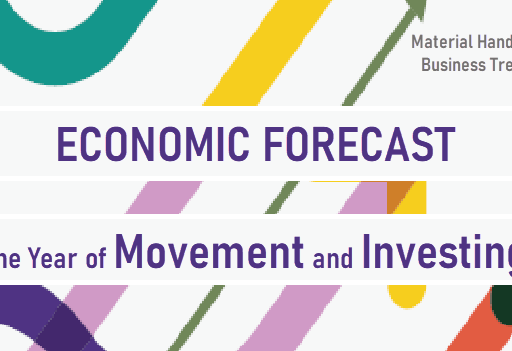2024 – The Year of Movement and Investing
ITR Economics CEO Brian Beaulieu is a trusted economic analysis and forecasting source. Because of his expertise and familiarity with MHEDA members, he is always a highly-anticipated speaker at the MHEDA Convention and on MHEDA-TV. As we enter 2024, Beaulieu encourages MHEDA members to not shy away from intimidating words like “recession,” but to instead take control of processes and planning. Beaulieu notes how vital it is that businesses invest in themselves and their people. He also informs members on what they can expect next.
What do you think is the biggest economic downfall for MHEDA members next year as well as the biggest opportunity?
It depends on the individual. Everyone is in a different place. My biggest concern is that they haven’t properly addressed their cash flow needs over the course of 2024. Having a sufficient cash flow statement that goes out at least through 2024 is very important because banks are continuing to tighten credit. We’ve even seen some lines of credit cut back. The last thing you need is to be scrambling for cash going through 2024, because the businesses that have access to cash, or have a war chest of cash, at the bottom of a cycle are the ones that prosper the most on the other side. So, I’m not worried about their operations as much as I am about the financial well-being of MHEDA members.
Their opportunities are to tune out all the noise. The noise level is going to get amped up because it’s the election season. All sorts of silly things get said during election seasons, and the media is all over the place. Tune that out.
Also, understand from our perspective that we’re going into what is going to be a mild decline in industrial production. In manufacturing, we’re already seeing weakness in some of the traditional MHEDA markets. They’re already running a little bit below year-ago levels. But it’s not a big cliff. It’s something that you can manage through. Really, if you’re smart and you know your competitive advantage, you can take market share away from somebody else. When you do that, with this type of business cycle, you end up on the other side with a slower growth year rather than a business decline. It’s because they took the initiative to act against the decline rather than not being that aggressive in terms of market share just because their backlog feels good right now.
What are some practical steps that members can take for any economic changes in the upcoming year?
They need to be very cognizant of the fact that on the other side of 2024 and the beginning of 2025, is a recovery trend that we think will last through ’26, ’27, ’28 and ’29.
So what I really hope that they’re going to do is look at this short-term issue that is not severe and say, ‘I’m going to need all those people that work for me in it for the long haul, and I’m going to need even more people down the line.’ Then, act accordingly.
In terms of a public company, they don’t have as much latitude as a privately-held company. Sometimes you have to accept that your margins are going to be a little bit compressed, or your EBITA isn’t going to be exactly what you want it to be in the short term because you need to position yourself for the long term. That’s what I’m encouraging our readers to do: Think about the long term. Don’t overreact to the short term.
Do you think any supply chain disruptions are new or residual from 2020?
It seems to be residual. In fact, when we look at the import side of things, intermodal traffic is way down at the ports. Trucking costs are coming down so that the disruptions seem to be a lot more isolated than they used to be rather than systemic. Also, they work themselves out. The issue isn’t getting anything in from outside the country. The issue is usually with the U.S. supplier that isn’t coming across with what they’re supposed to on time, as I’ve heard from the people I talk to in the industrial space. To that extent, it’s different than past years during the 2020s. However, it’s a lot more localized and it will be smoothed out.
What are your predictions when it comes to a recession in 2024?
If we’re talking GDP, there will not be a recession. But if you’re talking manufacturing, it’s already moving in that direction. Europe is in recession, Russia is in recession and China probably is. It’s not going to be severe. Anybody reading this should think back to 2016 and ’17. That’s going to be the shape of this cycle. So how did your business fare during those years? It may have been just an off year, but it was no big deal. That’s the paradigm they should have when they’re thinking about 2024. Instead of getting hung up on a label, go back to that period and ask ‘how did my business do?’ And then ask yourself the following questions: What do I wish I had never done? What am I really pleased that we did? But for 2024, this is a time to learn from recent history and about how to make the future.
How do you think newer generations entering the workforce and older generations leaving will affect employment rates?
We think the labor market will remain tight for the next eight to 10 years. What you just described about the older workforce leaving … they’re not being readily replaced where we need replacements. In other words, we have lots of people with college degrees these days, but what we need are some trades, and what we need are people who know how to run a forklift. We know we need people who know how to use their hands. And they’re the ones that are in short supply and will remain acutely in short supply going forward. It’s at that level where you’re going to see the graying out of the workforce and the driving up of wages, making the people that we have on the payroll that much more precious. It’s funny how labor participation rates are now above where they were pre-COVID, so people are back to work. The 16- to 24-year-old-bracket labor participation rate is nothing like it was in the 90s and even as recently as the early 2000s. It has fallen precipitously and many of them are going to college and going on a student loan. In their eyes, that’s a lot easier path to walk than strapping on a belt and getting your hands dirty.
What indicators would you recommend that people look at to see what the economy is going to do?
Look six to 12 months out, because it seems like everything we used to know is no longer true. Particularly if you’re using a rate of change heavily right now, it’s gotten very difficult to read, because we’re still in that post-COVID aftermath. So the numbers are extreme, which makes it difficult. We’re still looking at those, but we’re relying more heavily on the data trends rather than the rate of change trends for cutting through some of that noise measuring the seasonal strength. I continue to use the ITR Leading Indicator very heavily. It’s a retail sales leading indicator that we developed. We came up with our own leading indicator for single family housing because the tried and true isn’t working as well. So, we needed to reinvent some tools to go forward.
At the end of the day, when you’re selling material handling equipment and systems, it’s about moving product and the product is going to only move if the consumer is out there buying stuff. So one of the things that you want to start looking at is credit card delinquency rates. They’re going to show you that there’s a bifurcation right now going on in the economy that I think is more apparent than ever. When the media talks about the pain that’s out there, or the stress that’s out there, it is out there at a certain socioeconomic level.
You see this phenomenon in the housing market. Home inventory is very low and the economics to move given high mortgage rates are detrimental to the market in general.
However, for homes priced at half a million dollars and above, the market is moving more normally. Potentially because at that price point, the high mortgage rates are not as much of an issue since more cash and less leverage are used to make the deal happen. You’re going to see among members who are being pulled more directly forward by the upper-income levels that the application is likely to fare better than those who are distributors for Walmart or Target for example. That’s part of what makes it different right now, to answer your question, is that we’re really talking about two very different economic streams within the overall economy.
In a blog I wrote I pulled up some numbers. Building materials were down 4.2% year over year for the third quarter. Suppliers are hurting. E-commerce was up 7.7% from a year ago, but the pre-COVID 10-year growth rate was 14.7%. That’s cut in half from the growth rate that it used to be pre-COVID not even looking at the COVID surge. So I’m not surprised that some people would have trouble with excess inventory because they were looking at the recent past and those supply chain issues. Now we find ourselves in slow growth mode compared to even pre-COVID. Things degraded relatively quickly, except for our building materials category which still has positive numbers.
Is there anything else you would like to add?
The third quarter of 2023 GDP numbers just came out. And while the media is talking about the strength of the numbers, I actually tore the numbers apart. One of the things that was glaring at me was that business investment in capital equipment was actually negative. GDP would have been even higher if it wasn’t for the fact that there’s a lack of investment going on right now. Don’t let that be our people; they need to continue to invest in themselves, and they need to continue to invest in efficiencies and in their people. It’s not easy to do with these high interest rates. We’re not going to be getting much interest rate relief. So they need to be very strategic about it, and I get that. They maybe can’t do everything, but you still have to keep moving that ball down the field. You can’t afford to let up on that particular aspect of your business. Because we don’t have the bodies, we’re going to have to have the machines to make it happen.




